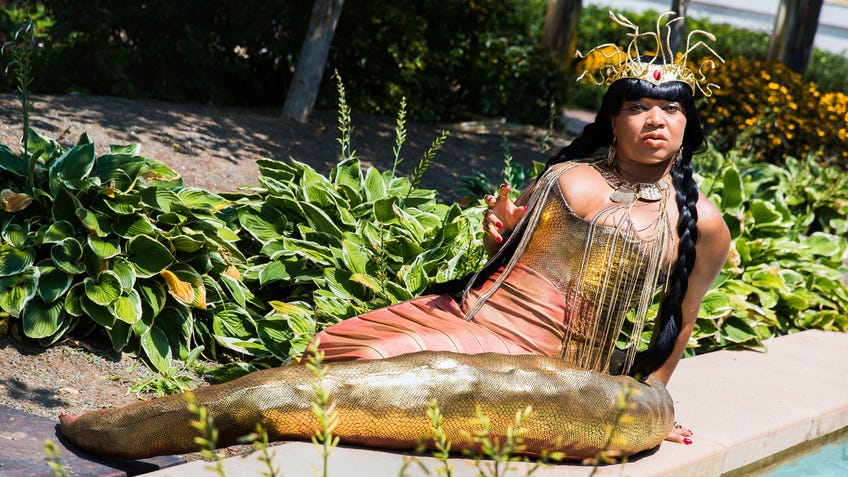“There’s something about cosplaying a character that draws you closer to them”: How D&D cosplay provides another way to roleplay
Exploring the Dungeons & Dragons cosplay community, how to start and why it’s worth doing.
Tabletop roleplaying is not limited to the tabletop. Players are always finding new ways to experience roleplaying games, whether online using platforms such as Roll20 or outside by organising LARP - or live-action roleplay - sessions with their friends.
Another way people are engaging with tabletop roleplaying is through cosplay. For the uninitiated, cosplay is when someone dresses up as a fictional character, often at a convention or similar event. (To find out more about cosplay, head on over to our sibling site Cosplay Central.) Cosplay is most commonly thought of in relation to other forms of media, such as video games or film, but there is a community of Dungeons & Dragons players who are using cosplay to connect with the fantasy RPG.
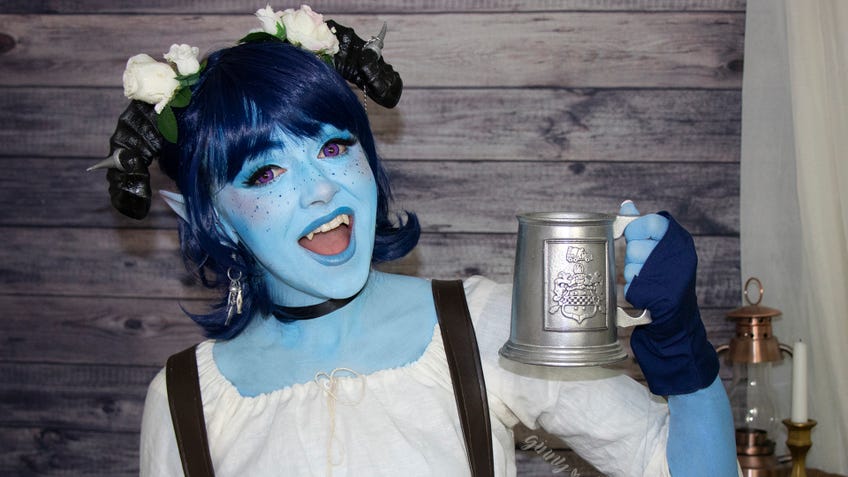
However, Dungeons & Dragons doesn’t really have any iconic characters that people beyond the hardcore fanbase would recognise at a passing glance - especially as players create their own characters that are unlikely to be recognised outside of their own campaign. One of the most enjoyable aspects of cosplaying is seeing the public’s reaction to your costume: the impressed glances from people who know the character and the exuberant cries from those that love them. With a franchise like D&D, a tabletop RPG that has few common reference points when it comes to characters, it’s a little hard to get that kind of reaction from the general public.
I started watching Critical Role and I think for the first time I realised why people play D&D.
This lack of recognisable figures is why many Dungeons & Dragons cosplayers decide to dress as characters from actual play series - videos or podcasts where people play an RPG campaign - which have a cast of beloved characters and an existing fanbase that adores them. Ginny Di, known as itsginnydi on Instagram and on Twitter, made her own costume for the Critical Role character Jester Lavorre, a tiefling cleric with a fondness for baked goods and practical jokes.
“I started watching Critical Role and I think for the first time I realised why people play D&D and what could be so enjoyable about playing tabletop games,” she says. “People have found me because of Critical Role and that’s the only reason I only have an audience of people who play D&D at all.”

Before encountering Critical Role, Ginny didn’t have any experience in playing Dungeons & Dragons, but was already involved in cosplay - becoming characters such as Officer Jenny from the Pokémon animated series and Ayra Stark from Game of Thrones. After watching how Matthew Mercer, Laura Bailey, Travis Willingham, Marisha Ray, Ashley Johnson and the rest of the series’ cast brought the characters to life, Ginny decided to combine the two hobbies by making a costume for Jester. She felt that cosplay would be the perfect method for breathing life into the character beyond her presence in Critical Role and the copious amounts of fanart for the show.
Being able to bring D&D to life in a visual sense is so cool.
“D&D is a game where you don’t get to see what’s happening most of the time,” Ginny explains. “You’re just hearing about it, so being able to bring that to life in a visual sense is so cool and I think [cosplay] can really bring another dimension to the game.
“There’s something about cosplaying a character that really draws you closer to them.”
Creating Jester required Ginny to come up with a realistic design for the character’s costume, one that she could build and - most importantly - comfortably wear for hours at a time. Luckily for her, there was a bounty of fanart of the character available to use as references. Crucially, she had to figure out how to translate the anatomy of a tiefling - a D&D race with tails and horns - into a real-world costume that imitated body parts she didn’t have. “A ‘real life’ tiefling - scare quotes necessary - is going to be able to move their tail or hold their tail up off the ground,” Ginny outlines.
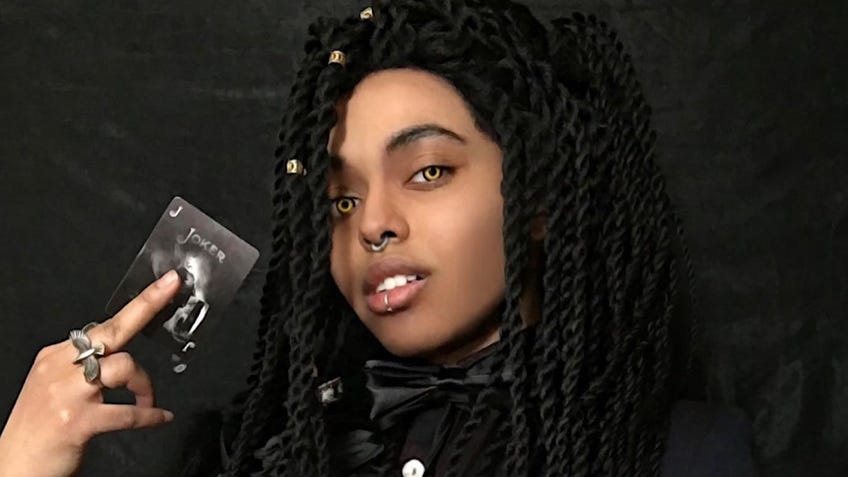
Another Jester cosplayer, Sarah D - known as Sarahndipity Cosplays on Instagram and Twitter - found that she could make a costume for the character by reusing existing pieces of clothing. “I like to use as much recycled stuff as I can, so I usually start by looking at references a lot and then finding pieces I can modify,” she explains.
Cosplaying from stuff like D&D is really freeing.
It helps that, as a character whose visual image has been partially defined by fanart, Jester’s design is a lot more open to interpretation and alteration than other pop culture characters might be. Ginny elaborates: “cosplaying from stuff like D&D, where you have so much flexibility and where accuracy is not necessarily the most prized thing, is really freeing, and that’s something this community needs right now.”
Like Ginny, Sarah was cosplaying before she started playing Dungeons & Dragons and got into the game through a popular RPG playthrough. In Sarah’s case, it wasn’t just Critical Role that lured her into the hobby, but also actual play podcast The Adventure Zone - hosted by father-and-sons group Clint, Griffin, Justin and Travis McElroy. “I remember loving the characters, like they’re so good, there’s something about them,” explains Sarah. “I feel kind of proud because I got all of the friends in my immediate circle into D&D.”
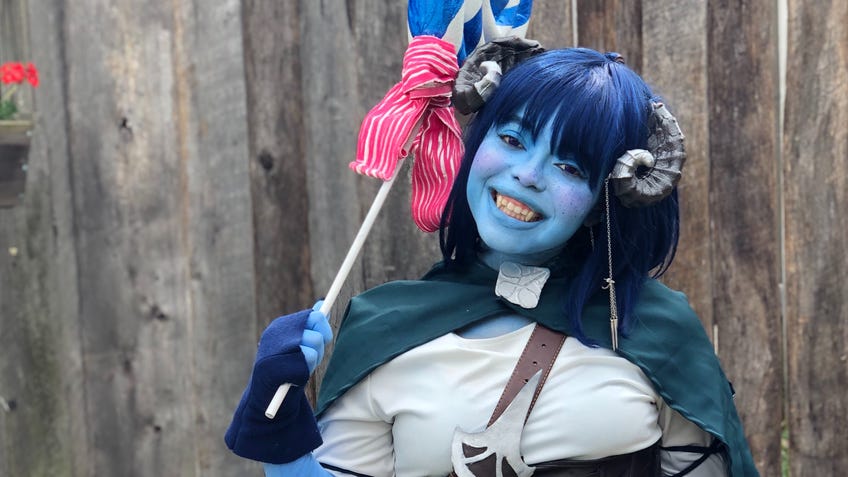
Sarah cosplays as The Adventure Zone character Kravitz, a bounty hunter for the Raven Queen - one of D&D’s most iconic deities - who sometimes appears as a skeletal being. After Travis made a joke about imagining the character being like Lenny Kravitz - despite not actually being named after the musician - Sarah created a costume around that idea, using various pieces of fanart and the podcast itself to inform the design. Speaking about her design process, she explains that people in the Dungeons & Dragons cosplay community will often form their own interpretations of characters such as Kravitz: “Not everyone looks the same, but you get themes that start to show up for different characters.”
I didn't realise what I was doing was considered cosplay. I didn't even know about the subculture at all.
Existing characters aren’t the only examples of Dungeons & Dragons cosplay out there, as many cosplayers are also creating and wearing costumes based on their own original characters. GeishaVi - who posts images of her creations on Instagram and Twitter - has been part of the cosplay community for a long time and primarily makes costumes based on characters from the myriad of tabletop roleplaying games she’s played in, alongside many other costumes based on films and other media. Whereas Ginny and Sarah began playing D&D after watching others play, GeishaVi has been playing RPGs alongside cosplay for years, having started cosplaying by creating pieces of nightclub fashion based around her passion for anime and pop culture. “When I was first initiated into cosplay, I really didn't realise that what I was doing was considered cosplay. I didn't even know about the subculture at all.” she explains.
Once she began making costumes for her characters - like Ginny - GeishaVi says she enjoyed the amount of freedom and the potential for customisation that cosplaying Dungeons & Dragons characters gave her. When it came to creating characters for RPGs, she says she always considered how they looked and often made characters with a high charisma stat to match their striking appearance.
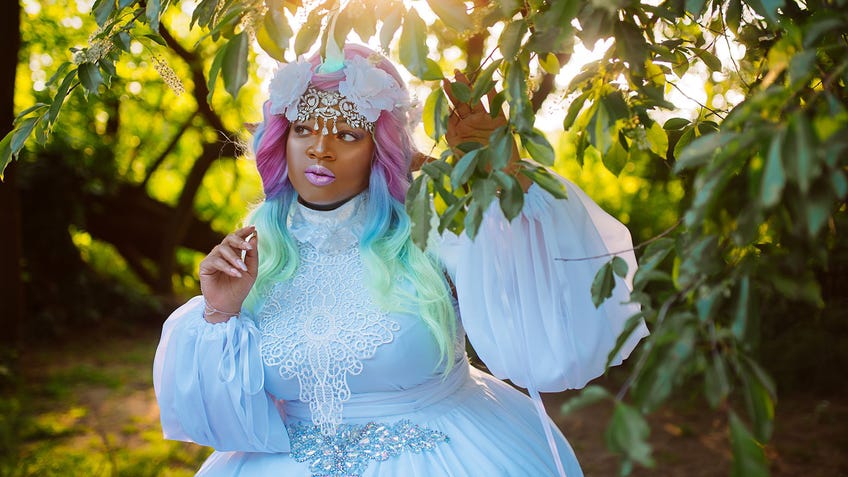
“I would look at pictures on the internet of outfits that I thought were really cool and go to my GM and be like, ‘Hey, this is what they look like, this is what they're wearing. How can that apply to the stats on this paper?’” she says.
I feel like you bring that character into the real world.
Imaging what her characters were wearing was an important part of roleplaying for GeishaVi and helped to drive her interest in cosplaying as them. Cosplaying is more than just the costume for her, it’s also about embodying the character itself - their mannerisms, personality and the way they interact with the world around them. GeishaVi comes from a thespian background and considers acting to be a fundamental part of cosplay. Knowing the character and understanding how to become them is an aspect of cosplay that naturally stems from roleplaying, and is one that she loves about the hobby, “I enjoy the freedom of being able to put on whatever costume I want and be whoever I choose to be in those moments,” she comments. “I feel like you bring that character into the real world.”
Becoming these characters doesn’t just bring them to life, it creates a visible platform for Dungeons & Dragons characters who are also people of colour. GeishaVi describes herself as being an activist within both the cosplay and Dungeons & Dragons communities.
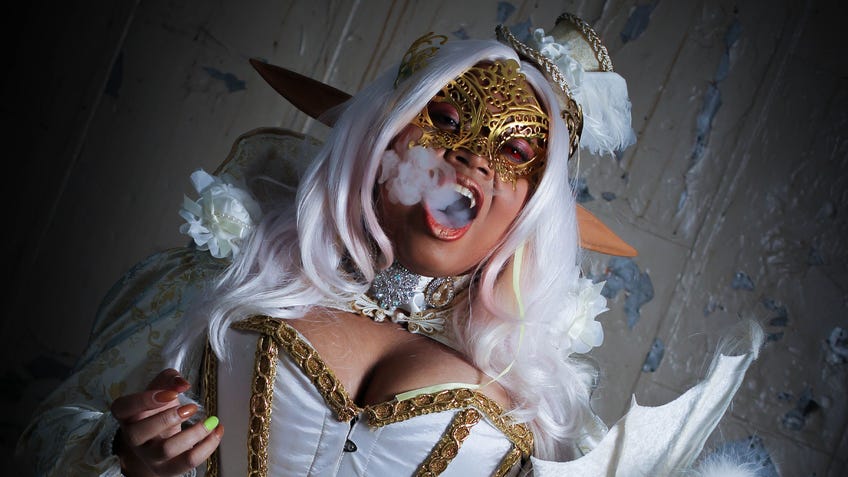
“I'm using my creative platform and my art to express various themes and issues that I feel are very important and need to be exalted, as loud as possible,” she explains.
Cosplayers have various body types, skin tones, sexual preferences, sexual identities, genders, all that.
Chief among these themes and issues is the lack of representation for people of colour in tabletop roleplaying games, fantasy media and cosplay coverage. GeishaVi has received backlash from a particularly toxic part of the cosplay community and audience for dressing as certain characters - specifically those typically portrayed as being white, such as comic book superheroes Starfire and Psylock. “Y’all have been included for this whole entire time,” she says about the toxic people who target her. “It's been catered around you. So why don't you let other people in? We're cool people. We have a lot to offer.”
Creating original characters to cosplay enables GeishaVi to form a space for people of colour in D&D, especially as there’s been a distinct lack of positive options for players and cosplayers when it comes to diverse representation. Though Wizards of the Coast - the company behind Dungeons & Dragons - may be attempting to make changes to the way that the tabletop roleplaying game approaches race, it seems that there is still a long way to go until diversity is accepted in cosplay.
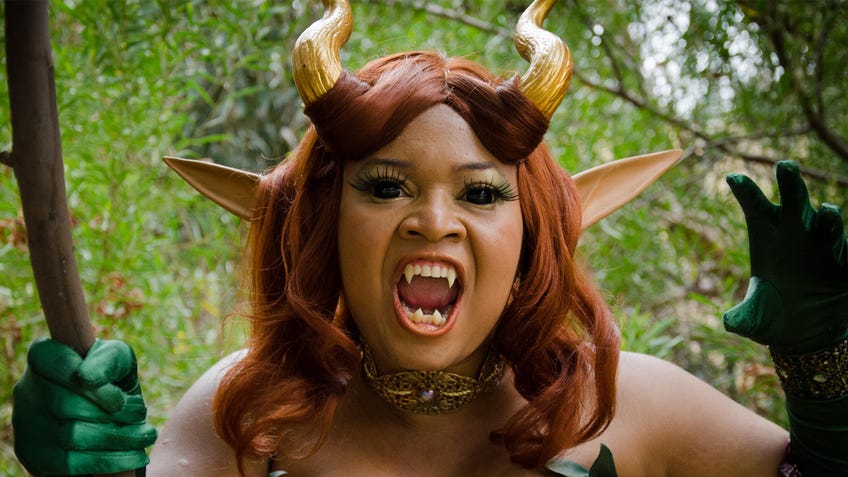
“We're [the cosplay community] very diverse,” states GeishaVi. “People have various body types, skin tones, sexual preferences, sexual identities, genders, all that - it’s the collective cornucopia of cosplay culture.”
Despite this, there are facets of the cosplay community that do provide a supportive environment for D&D cosplayers. Whether it’s people at events, viewers on TikTok or fans on Instagram, all of the cosplayers featured in this article have formed their own followings and friendships through the hobby - some have even made careers out of it.
When you’re in cosplay, you’re able to immediately connect with other people who are excited about the same stuff you’re excited about.
Even this year, when the majority of cosplay events have been cancelled due to the COVID-19 pandemic, positive interactions with other cosplayers and fans remains a huge draw. Thanks to online platforms like Twitter, Instagram and TikTok, Dungeons & Dragons cosplayers have been able to continue sharing their creative work and celebrating it with other fans, despite the events they’d usually attend not happening. Making friendships and fans is ultimately what the hobby is all about, and D&D cosplayers have found a way to keep their community alive and well.
“When you’re in cosplay, you’re able to immediately connect with other people who are excited about the same stuff you’re excited about,” says Ginny.
